- Register
- Log in to Tune-In
- Wishlist (0)
-
Shopping cart
(0)
You have no items in your shopping cart.
Beatles News

The Beatles’ album Sgt. Pepper’s Lonely Hearts Club Band drew its name from a hilarious misunderstanding.
Paul McCartney revealed the true origins of the title on a March 13 episode of his podcast, Paul McCartney: A Life in Lyrics. He admitted that Sgt. Pepper – one of The Beatles’ most prolific albums, complete with Grammy-winning songs and culturally-shifting concepts – derived its iconic name from something he once misheard.
“I was with our roadie Mal [Evans], a big bear of a man,” he told his guest, author and poet Paul Muldoon
“I was coming back on the plane, and he said, ‘Will you pass the salt and pepper?’ And I misheard him. I said, ‘What? Sgt. Pepper?’ He said, ‘No, salt and pepper,’” he recalled.
“And I always returned to one of the things about the Beatles, and me and John [Lennon], was that we noticed accidents,” he mused.
Hence, the name “Sgt. Pepper” stuck.
Source: thenews.com.pk
details
George Harrison thrived whenever folks underestimated him the most. When The Beatles broke up, the “Quiet Beatle” outperformed his more-renowned bandmates with his first solo album All Things Must Pass. And when people wrote off his solo career in the ’80s, he delivered the smash Cloud Nine, which put him back on top of the pop charts against all odds.
Cloud Nine proved a confident, exciting artistic statement, one that combined classic rock and roll songcraft with sharp production. But it might not have occurred in quite the same manner if Harrison hadn’t hooked up with a simpatico producer who happened to know a thing or two about writing pop hits.
When news sprang in 1987 that Harrison was making a new solo album, the rock and roll world wasn’t exactly shaken to the core. Yes, he was an ex-Beatle, so that would always carry weight. But he had shown little interest in going all-in with his solo career since the early ’70s. Harrison hadn’t toured in a decade, and he did less than the minimum in promoting Gone Troppo, his listless 1982 album that came and went without making much impact.
Now here he was five years later, trying to compete in a vastly changed musi details

Paul McCartney is often asked about his favorite Beatles song, and he admits it's a hard question to answer, but "if pushed," he admitted recently, it's "Here, There and Everywhere."
McCartney named the song as his favorite on a newly released episode of his podcast, McCartney: A Life in Lyrics, going on to explain how Fred Astaire was a partial inspiration for the 1966 track that appeared on Revolver.
"I was a big fan of Fred Astaire, I still am," he said. "And unlike the studio executives, who thought he could dance a little, has no voice. I always loved his voice, I still do."
McCartney also explained how he wrote the song one day while waiting for John Lennon to wake up for the day.
"I would go out to his house for a writing session, and he wasn't always up," he said. "So I would often have 20 minutes, half an hour while someone told him I was here, and he would get up. I remember sitting out by his swimming pool in his house in Weybridge, which is a golf suburb of London. I had my guitar because I was ready for the writing session. So we sat out and started something...it just went quite nice and smoothly. So by the time I came to write with John, by the time he deemed to get up and have his details

The Beatles weren’t eager to come together with "The Greatest."
It was 1964 when photographer Harry Benson took the Fab Four to meet Muhammad Ali. At the time, the fighter was preparing to go toe-to-toe against Sonny Liston while the band was gearing up to appear on "The Ed Sullivan Show."
"When you photograph Muhammad Ali, you always get something interesting," Benson chuckled to Fox News Digital. "Ali told them, ‘Your music is not that good.’ Let’s just say they didn’t particularly like that. And then the Beatles said, ‘We hear you’re not that good as a boxer.’"
"They still laughed about it, but it wasn’t a match made in heaven," Benson added.
According to Benson, Ali kept declaring how the foursome were "tiny, small, little men" in comparison to his towering frame. John Lennon and Paul McCartney, in particular, weren’t impressed.
Source: Stephanie Nolasco/foxnews.com
details
The first, whispered “Shoot me,” followed by Paul McCartney’s iconic bass line, makes the Beatles’ 1969 hit “Come Together” undeniably recognizable within seconds. However, the song’s compositional origin is as cloudy as its lyrics, which Lennon once described as “gobbledygook.”
“Come Together” is the opening track off ‘Abbey Road,’ setting the signature tone for the Beatles’ eleventh and highly acclaimed album. But before it served as the ‘Abbey Road’ opener, a much different version of the track was used for a political campaign.
A Favor For A Famed Friend
The origins of “Come Together” stretch back to psychedelic advocate and 1970 gubernatorial hopeful Timothy Leary. The Harvard University psychologist spent the early 1960s testing and promoting the beneficial qualities of marijuana, LSD, and psilocybin mushrooms. At a time when recreational drugs like marijuana were largely vilified, Leary gained a reputation in some circles as a dangerous criminal. In others, he was a revolutionary.
Source: Melanie Davis/americansongwriter.com
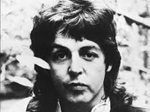
Paul McCartney thanked The Who’s Roger Daltrey for his work with Teenage Caner Trust. After 24 years, Daltrey stepped down as curator.
In a video, McCartney referred to him as his “friend for a million years.” He said: “You’ve made so many kids happy and healthier and all of us connected with it want to thank you, so much.”
In true Beatles fashion, McCartney broke into song and seemed to create the lyrics on the spot. Strumming a guitar, he sang: “Thank you Roger, thank you so, you’re a hero and you better know.”
Source: Music News/nowdecatur.com
details

Three rediscovered cassette tapes containing recordings of The Beatles in 1966 have sold for £10,000 at auction. They were made on Sir Ringo Starr’s personal tape recorder and include clips from the band’s tour of Germany, Japan and the Philippines.
Other highlights at the auction, held at Omega in Newton-le-willows, were a signed copy of the band's 'Please Please Me' LP, which sold for a whopping £24,000. A belt buckle worn by John Lennon was also on offer, but didn't sell after bidders failed to reach its reserve price.
In Ringo's tapes, the group discuss the importance of their famously short and punchy song structures.There is also a demo of The Beatles’ song Don’t Pass Me By and the sound of Sir Ringo performing on the piano.
Another sound bite contains The Beatles manager Brian Epstein discussing how to import valuable goods from Japan to the UK without paying high import taxes. And one of the recordings is from the group’s first trip to India, where they experimented with traditional instruments. Omega Auctions auction manager Dan Muscatelli-Hampson said: “These tapes are truly a remarkable discovery.
Hours of previously unheard material from details

The Beatles: Eight Days a Week – The Touring Years is a 2016 documentary directed by Ron Howard. It explores the Beatles’ rise to fame through their concert tours. The film uses rare footage and interviews to tell their story from their early Liverpool days to their final concert in 1966.
This documentary starts with their early club gigs in Liverpool, where they were just a band on the rise. Then, it follows them as they explode into international superstars, playing sold-out concerts around the world. Full of rare footage and interviews, the film shows the excitement of Beatlemania with the crazy screaming fans and the challenges of constantly being on tour. Viewers also see how this non-stop lifestyle eventually led the Beatles to decide to stop touring.
Directed by Ron Howard, it features interviews with surviving Beatles members Paul McCartney and Ringo Starr, reflecting on their touring experiences. Viewers can also see appearances from John Lennon and George Harrison in the form of archival footage.
Source: Elton Fernandes/yahoo.com
details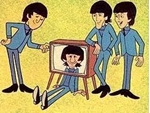
One of Mick Jagger's girlfriends revealed what the frontman thought of The Beatles' "Yellow Submarine." John Lennon also had plenty to say about The Rolling Stones.
The Beatles and The Rolling Stones will be compared to each other until the planet Earth is destroyed and any extraterrestrial life will have no chance of knowing that rock ‘n’ roll ever existed. One of Mick Jagger’s girlfriends revealed what the frontman thought of The Beatles’ “Yellow Submarine.” John Lennon also had plenty to say about The Rolling Stones. Mick Jagger felt The Beatles’ ‘Yellow Submarine’ was ‘silly.’
Marianne Faithfull was Jagger’s girlfriend and muse in the 1960s. She’s most known for her solo ballad “As Tears Go By,” which Jagger co-wrote with Keith Richards. In her 2008 book Memories, Dreams & Reflections, Faithfull recalled the way that Jagger reacted to some of The Beatles’ songs.
“Mick might, very occasionally, put The Beatles down for their provincialism, which, if you’re from London and they’re from Liverpool, is a very natural reaction,” he said. “But he’d never put their music dow details

The Beatles hit it big in the United Kingdom in 1963. Their record label in the United States didn't think it would transfer.
The Beatles’ record label could boast about their ability to sell albums from the biggest band in the world. Beginning in 1963, the band became an undeniable success in the United Kingdom, with records flying off the shelves and an increasingly rabid fan base. Capitol Records, which would eventually become the band’s American record label, initially wanted nothing to do with the group. They were certain they would sell well in the country. The Beatles’ record label didn’t think the band would do well in America
In 1963, “From Me to You” brought The Beatles their first Number One hit in the United Kingdom. It was their third single and marked the start of their rapid rise to success.
“It was very difficult in 1963 to think The Beatles were going to last forever and that I would be talking about them thirty years on. But it was very gratifying that they had made Number One,” Beatles producer George Martin said in The Beatles Anthology. “It took a whole year before they really conquered the world. It was 1964 before they had a Num details
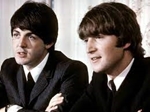
It’s been almost 44 years since The Beatles star John Lennon was killed at just 40. A couple of years later after processing his grief, Paul McCartney wrote a tribute song to his late friend called Here Today.
Reflecting on the track in the podcast McCartney: A Life in Lyrics, the 81-year-old recalled comforting Lennon in his moments of anxiety.
Macca confessed: “I remember him saying to me, ‘Paul, I worry about how people are going to remember me when I die’ and it kind of shocked me, I said ‘Okay hold on, just hold it right there.
“People are going to think you were great, you’ve already done enough work to demonstrate that.’ I was like his priest. Often I’d have to say ‘My son, you’re great, don’t worry about it,’ and he would take it. It would make him feel better.”
McCartney also spoke of bonding with Lennon over the loss of their mothers at an early age.
He said: “John’s persona was very guarded. Hopelessly guarded, that was where all his wit came from. Like so many comedians, it’s to shield themselves against the world. And John having had this very difficult upbringing, where his details
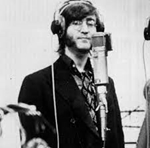
John Lennon‘s “Give Peace a Chance” isn’t the sort of song that’s ripe for a dance remix. That didn’t stop DJ Dan from releasing a dance version of the track. Yoko Ono said DJ Dan’s “Give Peace a Chance” would have made John burst out laughing.
John Lennon’s ‘Give Peace a Chance’ inspired a remix that barely used the lyrics
During a 2016 interview with Medium, Yoko was asked how the “Imagine” singer would have reacted to DJ Dan’s remix of “Give Peace a Chance.” “Oh, he would have had a good, good laugh,” she replied. “John had an incredible sense of humor, and we did these things not with incredible seriousness. Tongue in cheek, you know.” DJ Dan’s “Give Peace a Chance” is a bunch of bleeps and bloops interspersed with a few lyrics from the original song.
In the same interview, Yoko was asked if she still thought there was new musical ground to break. “Of course!” she replied. “You know, we’re breaking new ground every day. That’s how the world is. And you know, anything that comes out is better coming out, because the other side of th details
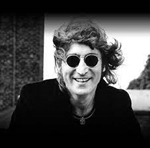
One Direction captured the hearts of millions worldwide with their infectious melodies, undeniable charisma, and relatable lyrics. As one of the most iconic boy bands of the 21st century, their discography boasts a treasure trove of hits that have stood the test of time. In this article, we delve into the realm of nostalgia and musical excellence to curate a list of the Top 10 Best One Direction Songs of All Time. From their early days on “The X Factor” to their chart-topping success as a group, each song on this list represents a momentous chapter in the band’s illustrious career, resonating with fans across generations.
1. What Makes You Beautiful
2. Story of My Life
3. Best Song Ever
4. Drag Me Down
5. Perfect
6. Live While We’re Young
7. One Thing
8. Steal My Girl
9. Kiss You
10. Midnight Memories
Source: Samuel Moore/singersroom.com
details
Mobile recording studios are a cornerstone of the recording industry, but few have the style— or inspiring mission—of the John Lennon Educational Tour Bus. For more than a quarter century, the nonprofit Lennon Bus has circled the U.S. and Canada, making stops at high schools and colleges to help students create music. The experience isn’t a simple feelgood photo-op either; it’s an exciting eight-hour day where visitors come aboard to write, perform and produce an original song and music video from scratch.
Students come away from the experience not only with content, but also new skills. “It’s not just for people who are self-described musicians or creators,” says Brian Rothschild, who co-founded the Bus with Yoko Ono Lennon. “It’s increasingly a way to show young people tools that they can use to demonstrate their knowledge and communicate about almost any kind of topic. It’s been made possible over the years by a collection of great sponsors, and we go to a lot of underserved communities, taking the finest tools that the industry has to offer out to places where maybe they don& details
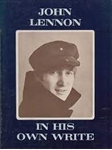
On March 23, 1964, John Lennon’s first book, In His Own Write, was published in the U.K. The 78-page volume featured 31 nonsensical and absurd short stories and poems, as well as an introduction by Lennon’s Beatles bandmate Paul McCartney.
Besides his obvious passion for music, Lennon was an avid reader and art lover growing up. As a child and teen, he began to channel his creativity into making cartoon doodles and writing poems and short stories that displayed his skewed, absurd sense of humor and knack for clever wordplay.
With The Beatles’ star on the rise, Lennon showed some of his writing and drawings to journalist Michael Braun, who in turn showed them to the head of U.K. publishing company Jonathan Cape, Tom Maschler. Impressed by Lennon’s works, Maschler agreed to publish them in a book.
On the evening of In His Own Write’s publication, an interview with Lennon about the book aired on the BBC television show Tonight. In addition, several excerpts from the book were read by some of the show’s presenters.
The book received mostly favorable reviews and was a huge commercial success, with its first edition run of 25,000 copies selling out in one day. In His details
